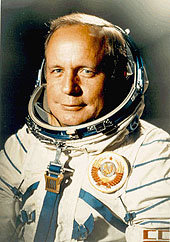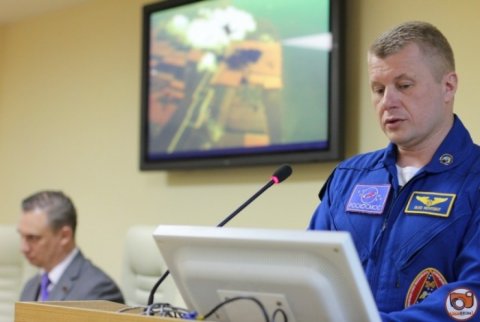On April 12th the whole world celebrates a day dedicated to man’s first flight into space. This is a special date – a triumph of science, technology, and the human mind going beyond the bounds of the possible. This is a day for all of those who made the first steps to conquering space and those who are continuing to advance the most planet’s most global sector.
At one time, space technologies seemed like science fiction. Today, science demonstrates the astonishing successes of space technologies: a huge number of artificial satellites are moving around the Earth, there was a successful Moon landing, a few space vehicles went outside the bounds of the solar system and contain messages for non-Earth civilizations, and researchers are preparing a project for human flight to the distant red planet.
Declaring this holiday – the International Day of Human Space Flight – the UN General Assembly expressed their deep assurance “in the general interest of mankind in the contributions of research and the use of space, which is an achievement for all mankind, for peaceful purposes, to expand the scale of this research, and in the continued efforts to ensure all governments the possibility of using the advantages related to it.”
Today, events are behind held all around the world in honor of this holiday, dedicated to the planet’s cosmic achievements. Not many know that the rich history of South Ural State University contains events tied to the visits of famous Russian cosmonauts. We invite you to remember these unforgettable meetings with those who have been “higher than the sky” with us.
Aleksey Leonov: the first man in open space
.jpeg)
SUSU rector Aleksandr Shestakov, at that time dean of the instrument-making department, invited the legendary Aleksey Leonov – two-time Hero of the Soviet Union and the first person to go into open space, to the department’s 40-year anniversary.
“The idea came from our department’s staff, and I really liked it. At that time the Mir station was in orbit, and a number of its instruments had been made by SUSU researchers. We kept in touch with Aleksey Arhipovich. Leonov also liked the idea. We got lucky. After this, we had a friendly relationship with Aleksey Arhipovich. When I go to Moscow, I visit him,” said Aleksandr Leonidovich, remembering the visit.
Later, the name Aleksey Leonov resonated in the university’s halls more than once. For example, the legendary cosmonaut send a congratulatory telegram in honor of the university’s 65-year anniversary to Aleksandr Shestokov. It was awarded to the rector within a large holiday concert.
Viktor Gorbatko: a cosmonaut who worked with Gagarin

On March 7th 2011 a meeting was held for students with pilot and cosmonaut Viktor Gorbatko at South Ural State University.
The legendary holder of two Hero of the Soviet Union gold stars completed his first spaceflight in 1969 aboard the Soyuz-7 orbital spacecraft.
Viktor Vasilyevich Gorbatko told students about the history of training people for the first space flight, and how he was one of the 6 candidates for the prestigious title of first man in space. Surely, this was the most intense training in the world. After all, no one know what would be waiting for them when they left Earth’s orbit and found themselves in space. The most memorable training, according to Viktor Vasilyevich, was the centrifuge.
Viktor Vasilyevich told the students about his training in the first soviet cosmonaut squad where he worked with Yuri Gagarin, and about the first spaceflight. In addition, Viktor Gorbatko met with university rector Aleksandr Shestakov and the dean of the faculty of Aerospace Engineering, Evgeniy Spiridonov.
Oleg Novitsky: 600 hours in zero-gravity
.jpg)
Russian cosmonaut, member of the cosmonaut squad of the Yuri A. Gagarin Cosmonaut Training Center.
He commanded the Soyuz TMA-06M spacecraft, which was launched on October 23rd, 2012 toward the International Space Station (expedition MKS-33). The crew also included Evgeniy Tarelkin and Kevin Ford.
Over the course of 10 years he served in the North Caucus Military District as pilot, senior pilot, and as deputy commander of the aviation squadron of the assault group for the 4th air force and the 4th army of the RAF and ADF. He mastered the L-39 and Su-25 aircrafts and has more than 600 hours of flight time.
Oleg Novitskiy visited SUSU on April 22nd, 2014 and talked about his experience of working on the International Space Station with SUSU students.
Vladimir Remek and “getting diplomas”
.jpg)
On October 25th a Czech delegation under Ambassaor Extraordinary and Plenipotentiary for the Czech Republic and Russian Federation, Vladimir Remekom, visited South Ural State University.
Vladimir Remek is a Hero of the Soviet Union. In 1978 he completed a spaceflight aboard Soyuz-28, piloted by Colonel Aleksei Gubarev.
Vladimir told the students about the unique feeling of being in space and seeing a meteor flying by:
“I know that a meteorite fell not far from Cheyabinsk. This is a unique sight. During my short flight I saw a similar meteor fall. It was far below us. On Earth we still call this a meteor shower. When you see this from two different sides – from Earth and from space – it gives some kind of philosophical meaning to the flight and to life as a whole,” said Vladimir Remek, sharing his feelings.
At the meeting, the majority of questions from students related to the aerospace field. According to Vladimir Remek, his professional skills and luck helped him become part of the main crew for the spacecraft.
Many also asked about the stages of cosmonaut training. The Hero of the USSR talked about the hardest moment in spaceflight.
Mikhail Kornienko and Gennady Padalka: answers from space
In 2015, students of the Journalism and Computer Technologies, Control, and Radioengineering faculties, members of the children’s radio club, and radio enthusiasts had the unique chance to speak with cosmonauts of the International Space Station. Mikhail Kornienko and Gennady Padalka expressed their desire to discuss any topic and answered all of the questions from Earth. During the conversations, the ISS was 403 kilometers from earth.
The organizers prepared in advance for the radio communication session with space. Contact with the cosmonauts was only possible in the short moment of time when they were flying over Chelyabinsk, so there would have been no time for the participants to think about what questions to ask. School students asked what the cosmonauts experienced the first time they saw the ISS and what it was like to be a cosmonaut. The other participants asked what was visible from the ISS and if a parachute would open in space.
The cosmonauts also discussed what music they listen to when working on the ISS. Besides the music sent to them from Earth by the Relax FM, Retro FM, and Avtoradio radio stations, Michael Kornienko loves to listen to rock and roll and is a fan of the group Mashina Vremeni (“Time Machine”), and Gennady Padalka finds relaxation in space listening to the choral preludes of Bach.
Cosmonauts on the airwaves once again
.jpg)
At the end of February 2016, SUSU students once again made contact with the International Space Station. Flight engineer of the ISS-46 crew Sergey Volkov answered students’ questions from orbit. The duration of these talks was 20 minutes.
Besides the students and their mentor, doctor of technical science Nikolay Voytovich, school students also participated in the session, many of whom are trainees from childrens’ radioclubs.
“I spent a big chunk of time around radiostations. When I was given the opportunity to talk, I asked the astronauts whether or not they had seen northern lights from space and asked them to share their feelings about what they saw,” says SUSU student Roman Sukhogolovy, “The crew members said that it’s very visible from space, and that it’s a truly fascinating sight”.
As for the schoolchildren, they expressed a desire to become cosmonauts and asked what they need to do to fulfill their dream.
Cosmonaut Day is an international holiday, a day of uniting people. After all, April 12th is the first day of the era of piloted spaceflights – a holiday for all which unites the Earth’s past, present, and future.




